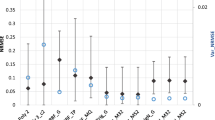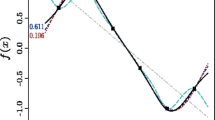Abstract
The use of statistical techniques to build approximations of expensive computer analysis codes pervades much of today’s engineering design. These statistical approximations, or metamodels, are used to replace the actual expensive computer analyses, facilitating multidisciplinary, multiobjective optimization and concept exploration. In this paper, we review several of these techniques, including design of experiments, response surface methodology, Taguchi methods, neural networks, inductive learning and kriging. We survey their existing application in engineering design, and then address the dangers of applying traditional statistical techniques to approximate deterministic computer analysis codes. We conclude with recommendations for the appropriate use of statistical approximation techniques in given situations, and how common pitfalls can be avoided.
Similar content being viewed by others
Author information
Authors and Affiliations
Rights and permissions
About this article
Cite this article
Simpson, T., Poplinski, J., Koch, P. et al. Metamodels for Computer-based Engineering Design: Survey and recommendations. EWC 17, 129–150 (2001). https://doi.org/10.1007/PL00007198
Published:
Issue Date:
DOI: https://doi.org/10.1007/PL00007198




